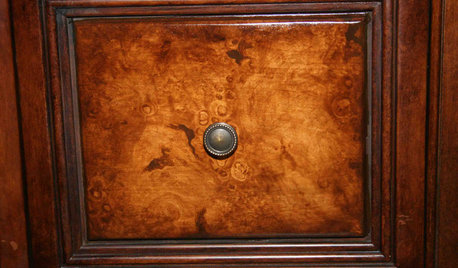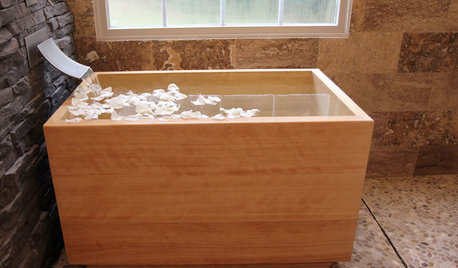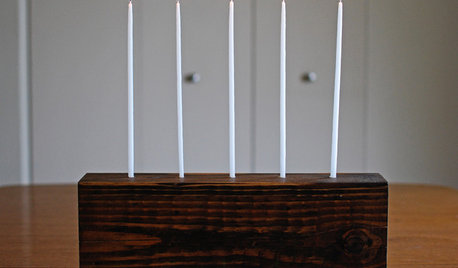Wood shavings
Sandra Tran
14 years ago
Related Stories

KITCHEN DESIGNTry a Shorter Kitchen Backsplash for Budget-Friendly Style
Shave costs on a kitchen remodel with a pared-down backsplash in one of these great materials
Full Story
LIVING ROOMSHow to Convert Your Wood-Burning Fireplace
Learn about inserts and other options for switching your fireplace from wood to gas or electric
Full Story
GARDENING AND LANDSCAPINGChoosing a Deck: Plastic or Wood?
Get the pros and cons of wood, plastic, composite and more decking materials, plus a basic price comparison
Full Story
DESIGN DICTIONARYBurled Wood
Gnarly tree growths create burled wood's interesting shapes and patterns
Full Story0

WOODWORKING5 Holiday Decorations to Craft From Scrap Wood
Give them as gifts or let your own home reap the rewards — these quality crafted pieces will last through many holidays to come
Full Story
WOODDesign Workshop: Plywood as Finish
Trendproof your interior with this sensible guide to using this utilitarian material indoors
Full Story
BATHTUBSRoom of the Day: Restorative Power of a Japanese Soaking Tub
A traditional tub made of hinoki wood sets a calming tone in this master bath renovation
Full Story
MODERN HOMESHouzz Tour: Heavy Metal Rocks a Modern Missouri Home
Steel shows up all over this single-level family home, but wood and other textures warm the look
Full Story
DECORATING GUIDESThis Modern DIY Candelabra Is the Envy of the Block
A plain wood block becomes a striking modern candelabra with just a few tools and easy-to-find materials
Full Story
STORAGEStroke of DIY Genius: Get Hooked on These 15 DIY Storage Hacks
These DIY homeowner ideas include a repurposed vintage tennis racket and reclaimed-wood pieces
Full Story





diggerjones
plumiebear
Related Professionals
70037 Landscape Architects & Landscape Designers · North New Hyde Park Landscape Architects & Landscape Designers · Clermont Landscape Contractors · Cordele Landscape Contractors · Danvers Landscape Contractors · East Haven Landscape Contractors · Los Banos Landscape Contractors · Lynwood Landscape Contractors · South Hackensack Landscape Contractors · Bon Air General Contractors · Monroe General Contractors · Port Huron General Contractors · Renton General Contractors · View Park-Windsor Hills General Contractors · Waimalu General Contractorsgwtamara